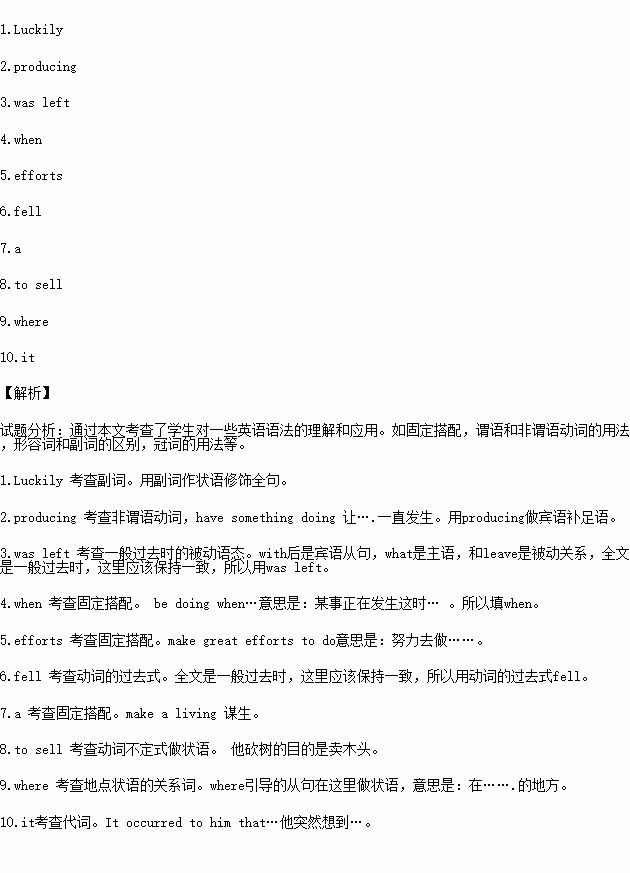题目内容
阅读下面材料,在空白处填入适当的内容(1个单词)或括号内单词的正确形式。
Mr. Johnson lived in the woods with his wife and children. He owned a farm, which looked almost abandoned. 1. (lucky), he also had a cow 2. (produce) milk every day. He sold or exchanged some of the milk in the towns nearby for other food and made cheese and butter for the family with what 3. (leave). The cow was their only means of support, in fact. One day, the cow was eating grass 4. it began to rain heavily. While making great 5. (effort) to run away, she 6. (fall) over the hill and died. Then Johnson tried to make 7. living without the cow. In order to support his family, Mr. Johnson began to plant herbs (草药) and vegetables. Since the plants took a while to grow, he started cutting down trees 8. (sell) the wood. Thinking about his children’s clothes, he started growing cotton too. When harvest came around, he was already selling herbs, vegetables and cotton in the market 9. people from the town met regularly. Now 10. occurred to him that his farm had much potential and that the death of the cow was a bit of luck.
 阅读快车系列答案
阅读快车系列答案
